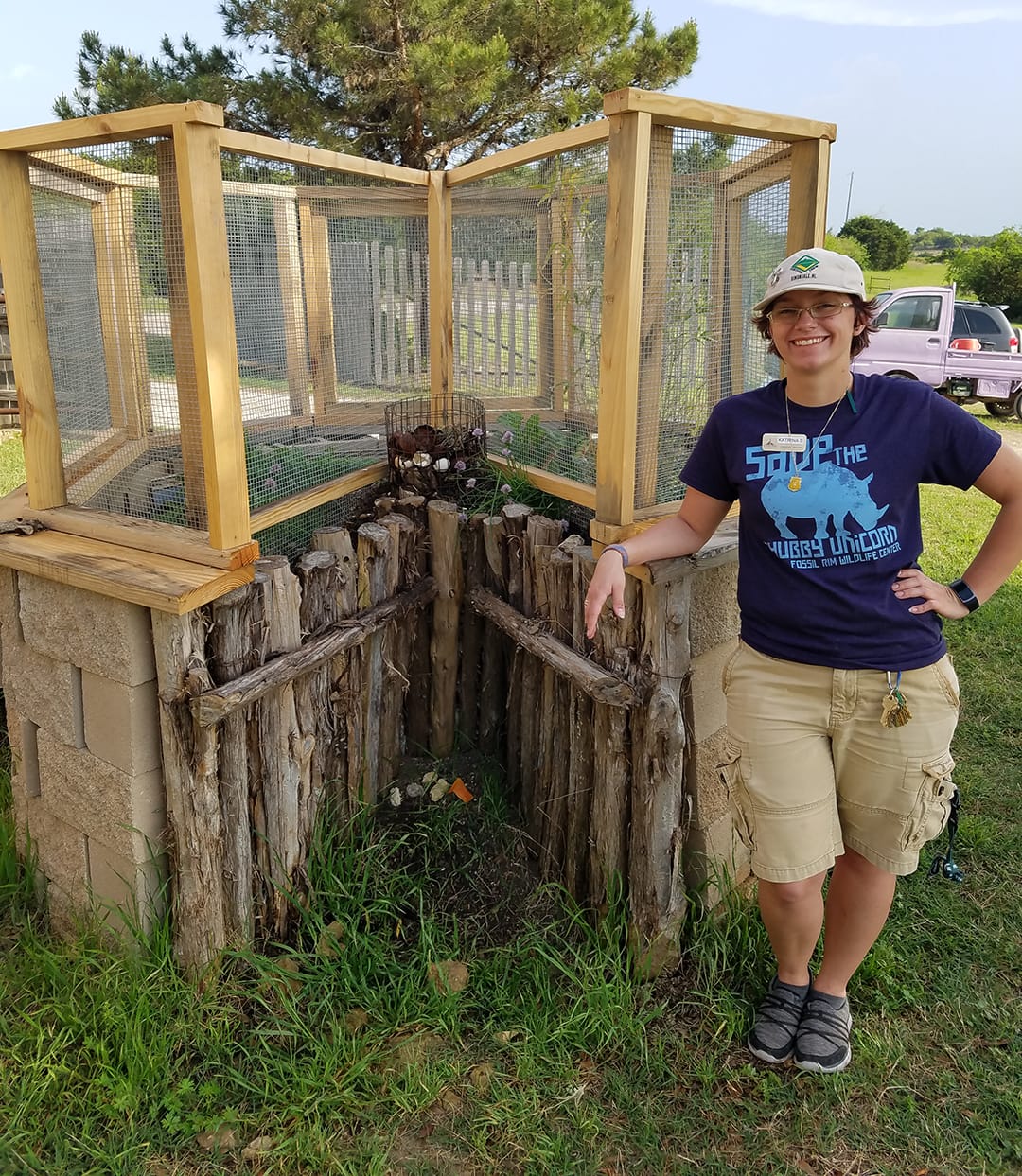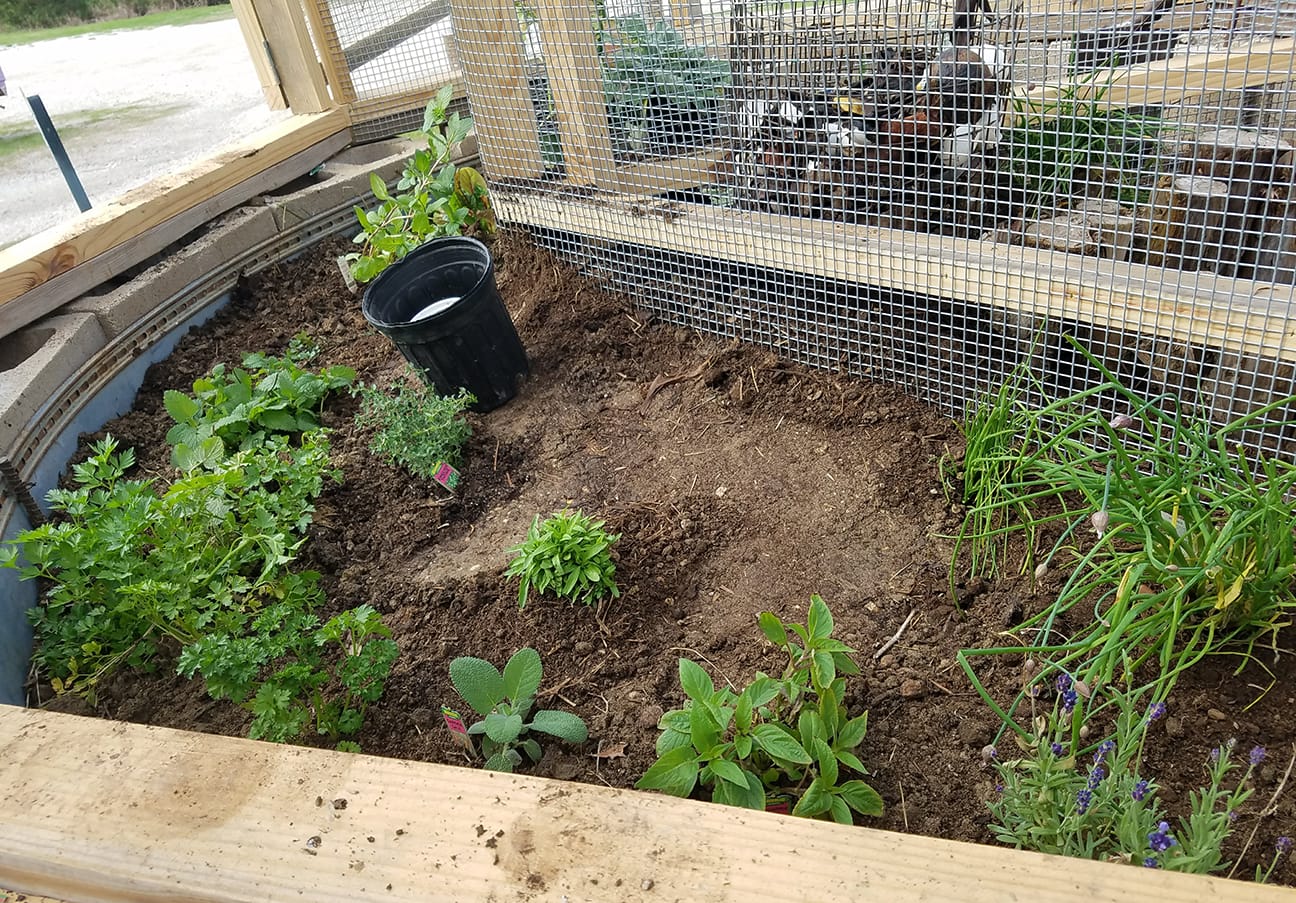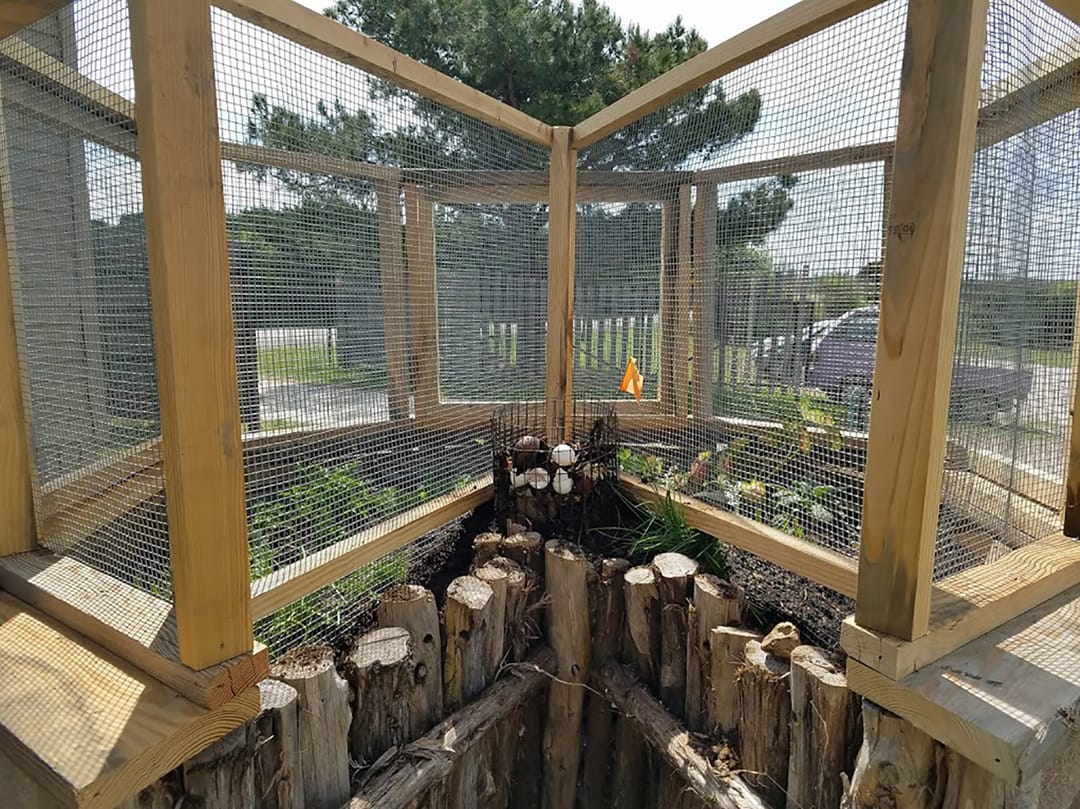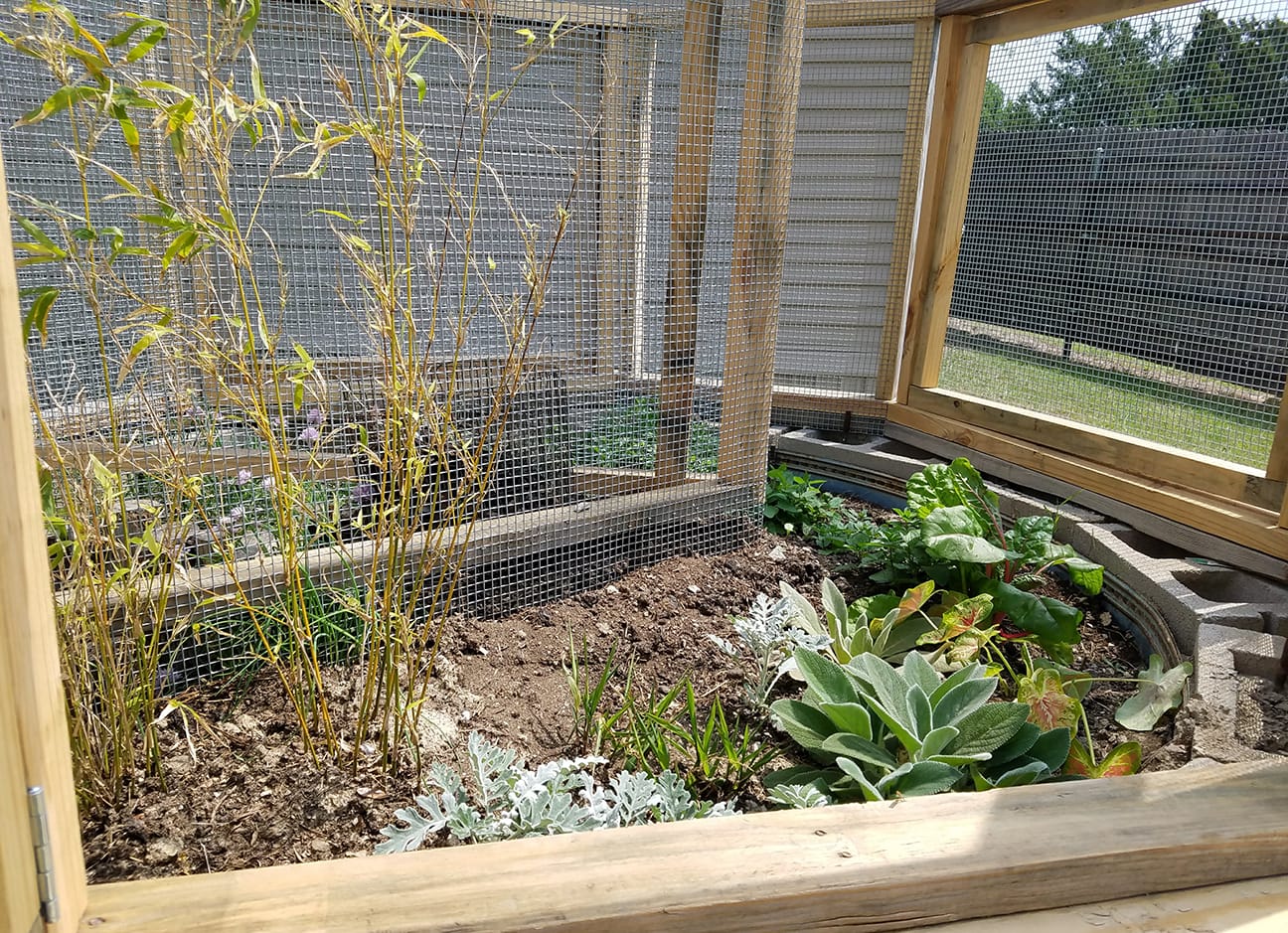The purpose of a sensory garden is to stimulate senses and get kids more interested in nature.
Sensory gardens encourage people to touch, taste, look, hear, and interact with the nature around them. These gardens are especially beneficial to people with sensory processing challenges or disabilities.

With kids who have hyper reactions to stimuli, sensory gardens can be used as a calming place. For kids with hypo reactions to stimuli, sensory gardens can help stimulate their senses.
Sight/visual stimulation is one of the most important things to think of when designing your garden. The most popular sensory garden designs are pathways or keyhole gardens. When building your garden, remember brick, gravel, and stones can also be colorful and attention-grabbing.

It’s important to create a balance between restful colors (blue, purple, white) and energizing colors (red, orange, yellow). Not only can the building materials be colorful, but so can the plants! For example, sunflowers, caladium (aka Heart of Jesus or Elephant’s Ear), or Swiss chard.
Colorful plants also attract butterflies and birds, which will help out the local pollinators! Plants that are “weeping” or cascading will move in the breeze and help with contrast between light and shadow.
Touch/tactile stimulation can be achieved through soft, sticky, or spikey plants. Depending on the age range of your garden goers, spiky might not be the best choice. Some examples of soft plants are dusty miller, lamb’s ear, and a variety of sages.

If you’re looking for a Texas native, mullein works as a good replacement for lamb’s ear. Some grasses, like feather grass, have a feathery texture when rubbed up the stem. A good example of a sticky plant is bedstraw (Galium aparine). As an added bonus, bedstraw is fun to stick to people when their back is turned!
Sound is one of the harder senses to cover. While just sitting out in nature and listening to the birds and the bugs is a great way to incorporate sound, putting certain grasses into your garden can create additional interesting noises. Even the rustling leaves of different plants can be pretty loud in the right breeze.

The seed pods of Inland sea oats in the fall will rattle, and certain bamboo will creak or rattle in the breeze. If you’re including non-plants in your garden, wind chimes are an excellent addition, and so is any form of water element, be it a waterfall, fountain or even a bubbler in a small pond.
Smell and taste often go hand-in-hand. Although, fair warning, if you’re including taste in your garden, be sure not to include anything that could be poisonous. In my sensory garden, I used mostly herbs for both taste and smell.

For example, lemon balm, lavender, sage, pineapple sage, Mexican mint marigold, chives, parsley, chocolate mint, spearmint, rosemary, and thyme work for both. You’ll want to create a variety of plants that release their own fragrance and plants with leaves that need to be crushed or rubbed to release scents.
Depending on the size of the sensory garden, fruits and vegetables are also a great thing to include. From an education standpoint, some kids don’t realize where their food comes from, and being able to pluck a fruit or vegetable straight from the plant and eat it is such a remarkable experience!

Sensory gardens don’t have to be huge; Fossil Rim’s sensory garden was recently created in the keyhole garden we already had. Even with the limited space, we were able to cover all five of the senses and put in a lot of herbs that kids can eat and smell. We did have to put a fence around our garden to keep the pesky deer from eating our plants, though!
Sensory gardens can be a fantastic way to give kids the opportunity to explore gardening and the outdoors by engaging them in an inclusive and interactive way.
-Katrina Schlicker, Conservation Education Intern
Caitlin Pyle, a Fossil Rim education staff member and former intern, shared some thoughts on the garden and Schlicker’s efforts during her time at the wildlife center.
“A keyhole garden was built in this location several years ago, but this additional deer-proofing was constructed by our support services department and (Director of Education) Tessa (Ownbey) in March,” Pyle said. “Katrina chose the plants and planted them – she brought it back to life. I think she took something that could be improved on and really ran with it. She saw a niche for our park that she could address and made it her own.
“It’s self-sufficient, so even after she leaves we’ll be able to keep the sensory garden going to be enjoyed by a lot of people for a long time. Projects like this build an intern’s confidence and repertoire so they can go on to be successful in full-time jobs.
“Having interns come through the education department, and other departments at Fossil Rim, really does bring fresh ideas. Our department wouldn’t be what it is without our interns.”
To learn more about keyhole gardens, check out https://fossilrim.org/2017/05/18/keyhole-garden-unique-design-unbelievable-productivity/. For specific questions about sensory gardens or keyhole gardens, email education@fossilrim.org.
